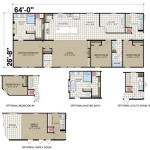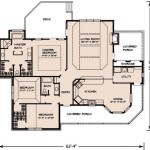Fire Evacuation Plan For Home
A comprehensive fire evacuation plan is a crucial component of home safety, designed to ensure the swift and safe exit of all occupants in the event of a fire. Developing and practicing such a plan can significantly reduce the risk of injury or fatality. This document outlines the essential steps involved in creating a robust fire evacuation plan, promoting preparedness and potentially saving lives.
The importance of a fire evacuation plan cannot be overstated. Fires can spread rapidly, leaving occupants with limited time to react. A well-rehearsed plan minimizes confusion and panic, enabling individuals to evacuate quickly and efficiently. This includes identifying potential hazards, establishing escape routes, and designating meeting points, all of which contribute to a more organized and safer evacuation.
Key Point 1: Hazard Identification and Prevention
The first step in creating an effective fire evacuation plan is to identify potential fire hazards within the home. This involves a thorough assessment of each room, looking for items or situations that could easily ignite or contribute to the spread of fire. Common hazards include:
Cooking Equipment: Stoves, ovens, and microwaves are frequent sources of kitchen fires. Grease buildup, unattended cooking, and malfunctioning appliances can all lead to ignition. Regular cleaning and maintenance are essential to prevent these incidents.
Electrical Issues: Overloaded electrical outlets, frayed wires, and faulty appliances pose significant fire risks. Regularly inspect electrical cords and outlets for damage. Avoid overloading circuits and use surge protectors to prevent electrical fires.
Heating Appliances: Space heaters, fireplaces, and wood-burning stoves require careful operation. Keep flammable materials away from heating sources and ensure proper ventilation. Regularly inspect and clean chimneys to prevent creosote buildup, a major cause of chimney fires.
Flammable Materials: Combustible liquids such as gasoline, propane, and cleaning products should be stored in approved containers and kept away from heat sources. Paper, cardboard, and other flammable materials should be stored properly to prevent accidental ignition.
Smoking Materials: Carelessly discarded cigarettes are a leading cause of residential fires. Ensure that all smoking materials are extinguished completely and disposed of in a fire-resistant container.
Once potential hazards have been identified, implement preventative measures to minimize the risk of fire. This may involve repairing or replacing faulty appliances, improving electrical wiring, ensuring proper storage of flammable materials, and promoting safe cooking and heating practices.
Installing smoke detectors is a critical preventative measure. Smoke detectors should be installed on every level of the home, inside each bedroom, and outside sleeping areas. Test smoke detectors monthly to ensure they are functioning properly and replace batteries at least once a year, or as recommended by the manufacturer. Consider interconnected smoke detectors, which will sound an alarm throughout the house, even if the fire originates in a distant location.
Key Point 2: Escape Route Planning and Practice
Once potential fire hazards have been addressed, the next step is to develop and practice escape routes. This involves identifying multiple ways to exit the home from each room, considering both primary and secondary routes. Factors to consider when planning escape routes include:
Primary Exits: Usually the main door to the room or a readily accessible window. Ensure that primary exits are clear of obstructions and easy to open.
Secondary Exits: May include windows, fire escapes, or alternative doors. Ensure that windows can be easily opened and that fire escapes are in good working condition. If using a window as a secondary exit, consider purchasing an escape ladder, especially for upper-story windows.
Accessibility: Ensure that escape routes are accessible to all occupants, including those with mobility limitations. Consider installing ramps or other assistive devices as needed.
Clear Pathways: Keep hallways and stairwells free of clutter to ensure a clear and unobstructed path to the exits. Remove any tripping hazards or obstacles that could slow down the evacuation process.
Once the escape routes have been planned, it is essential to practice them regularly. Conduct fire drills at least twice a year to familiarize all occupants with the evacuation procedures. During the drills, simulate various fire scenarios and practice using both primary and secondary exits. Emphasize the importance of staying low to the ground to avoid inhaling smoke and feeling doors for heat before opening them.
Designate a meeting point outside the home, a safe distance away from the structure. This could be a neighbor's yard, a tree, or a mailbox. After evacuating, all occupants should gather at the designated meeting point to ensure that everyone is accounted for. Avoid re-entering the building for any reason until the fire department has declared it safe.
For families with young children, assign responsibility to older children or adults to ensure that young children are safely evacuated. Consider designating specific roles for each family member during a fire, such as someone responsible for grabbing the family's emergency kit or assisting elderly or disabled individuals.
Key Point 3: Communication and Emergency Preparedness
Effective communication is vital during a fire emergency. Ensure that all occupants know how to call emergency services and provide accurate information about the location and nature of the fire. Teach children how to dial 911 (or the local emergency number) and what information to provide to the dispatcher.
It is also important to have a family communication plan in place in case family members are separated during the fire. Designate an out-of-state contact person who can serve as a central point of contact for family members. Everyone should know this person's phone number and how to reach them in case of an emergency.
Prepare an emergency kit containing essential items that may be needed after a fire. This kit should include:
Water: Store at least one gallon of water per person per day for several days.
Food: Include non-perishable food items such as canned goods, energy bars, and dried fruit.
First-Aid Kit: A comprehensive first-aid kit should include bandages, antiseptic wipes, pain relievers, and any necessary medications.
Flashlight: Essential for navigating in the dark. Include extra batteries.
Battery-Powered Radio: To stay informed about emergency broadcasts.
Whistle: To signal for help if needed.
Dust Mask: To protect against smoke inhalation.
Warm Clothing: Include extra clothing and blankets to stay warm.
Copies of Important Documents: Keep copies of identification, insurance policies, and other important documents in a waterproof container.
Cash: Small denominations in case of power outages.
Store the emergency kit in an easily accessible location and ensure that all family members know where it is. Review and update the kit regularly to ensure that the contents are fresh and in good condition.
In addition to having an emergency kit, consider purchasing fire extinguishers for the home. Place fire extinguishers in strategic locations, such as the kitchen, garage, and near heating appliances. Learn how to use a fire extinguisher properly by following the PASS method: Pull the pin, Aim at the base of the fire, Squeeze the handle, and Sweep from side to side.
Educating all members of the household, including children, on fire safety practices is crucial. Teach them the importance of not playing with matches or lighters, recognizing the sound of a smoke detector, and knowing what to do in case of a fire. Regularly review the fire evacuation plan with the family to reinforce the procedures and ensure that everyone is prepared in the event of an emergency.
Review and update the fire evacuation plan regularly to reflect changes in the home or family circumstances. As children grow older or new family members join the household, the plan may need to be adjusted to accommodate their needs. Similarly, if any changes are made to the layout of the home, such as remodeling or adding new rooms, the escape routes should be re-evaluated.
Creating and practicing a fire evacuation plan is an ongoing process. By identifying potential hazards, planning escape routes, and preparing for emergencies, homeowners can significantly reduce the risk of injury or fatality in the event of a fire. Regular drills and communication will help ensure that all occupants are prepared and know what to do in a fire emergency. Vigilance and preparedness are key to protecting lives and property from the devastating effects of fire.
Home Fire Escape Plan White Rock Bc

What Is A Fire Escape Plan Edrawmax
Basic Emergency Plan Family Communication Manheim Township Pa Official Website

Fire Escape Plans

Home Fire Escape Plans

Preventing A Fire In The Home Department Of And Emergency Services

How To Make A Home Fire Safety Plan

Fire Safety Home Escape Plan Child Hub

Home Escape Planning San Bernardino County Fire Protection District

Fire Escape Plan The Complete Guide Edrawmax








